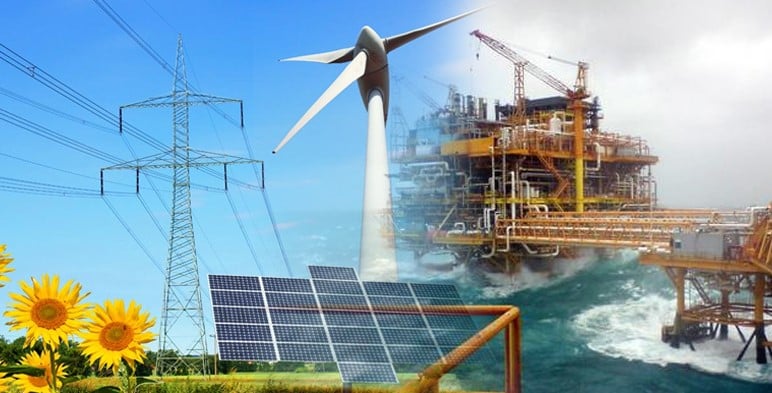Table of Contents
Introduction
Today, it is clear that the age of fossil fuels is coming to an end. The climate emergency and the obligations of international treaties are stopping the use of these energy sources that have shaped our current world. The energy transition advances because the combustion of fossil fuels releases gases such as benzene-pyrene, carbon dioxide, sulfur oxides, nitrogen oxides and carbon monoxide, which have negative consequences for the environment.
Environmental Impacts of Fossil Fuels
The release of these gases into the atmosphere has various consequences.: As the increase in the production of greenhouse gases and acid rain, global warming, the melting of the polar ice caps, the rise in sea level, the increase in torrential rains and the greater frequency of hurricanes, as well as the contamination of the soil, air and surface and underground waters.
The questioning of fossil fuels: It is paradoxical that fossil fuels, which have been the basis of industrial revolutions and have facilitated the unprecedented development of humanity, are now being questioned due to the serious environmental problems they generate. Its replacement by clean and renewable energy sources is inevitable.
The need to reduce CO₂ emissions : Reducing CO₂ emissions, as well as CH₄ and N₂O, is imperative to mitigate the effects of climate change. However, it is necessary to do it gradually and considering the possible negative consequences. Have the necessary steps been taken worldwide to decarbonize the planet by 2050? The energy transition will require several decades of development.
The global energy supply system
Vaclav Smil, a scientist and professor emeritus at the University of Manitoba in Canada, says that replacing fossil fuels with renewables will be a task that will take generations. The global energy supply system is highly dependent on fossil fuels, so their replacement will require continued effort in the future.
The importance of energy transitions
Previous energy transitions were done primarily for economic reasons. However, the current transition is based on environmental reasons and the protection of the planet. The goal is to reduce carbon generation and find sustainable alternatives to meet our energy needs. In Figure. 1, you can see an image that represents the extraction of fossil energy (oil platform) and clean wind energy (wind turbine) and the sun (solar panels).

The impact of fossil fuels on climate change
Fossil fuels are responsible for much of CO₂ emissions and climate change. Studies on climate change and the evidence obtained show that our emissions are altering the global landscape. Fossil fuel activity has a significant influence on the environment.
Global energy demand and the depletion of fossil fuels:
According to Foster and Elzinga , 80% of the world’s energy demand is met by fossil fuels. However, this energy system generates two thirds of global CO 2 emissions. If we maintain the current share of fossil fuels and double demand by 2050, emissions will exceed the carbon limit that can be emitted sustainably.
The need to look for alternatives:
It is crucial to look for alternatives to the use of fossil fuels to reduce the negative impacts they generate. In addition, by decreasing its use, we ask ourselves the question: When will the world run out of oil? This global concern drives us to explore new energy sources and adopt more sustainable practices.
Renewable energies as a viable option:
The generation of renewable energies, such as solar, wind, bioenergy and other forms of green energy, is presented as a viable option from the economic and environmental point of view. These energy sources take advantage of natural resources and the favorable climate for their production. In addition, the conversion of existing fossil fuel processes to less polluting technologies, such as the production of blue hydrogen through CO 2 capture, also contributes to reducing emissions.
Other alternatives to fossil fuels
In addition to renewable energies, there are other alternative fuels to fossil fuels:
- Ethanol, obtained from crops like corn, produces fewer greenhouse gas emissions.
- Biodiesel, derived from animal fats and vegetable oils, is also less polluting than petroleum-based fuels.
- Biomethanol, produced from biogas, is used in shipping.
- Green hydrogen, generated through the electrolysis of water, can be used in boilers, electricity generators and vehicles with zero emissions.
- In addition, the option of opting for renewable resources, such as solar, wind or hydraulic energy, for power generation, is a promising alternative.
Examples of initiatives towards renewable energy
Various companies and organizations in the fossil energy market are taking steps towards the use of renewable energy. For example:
Company: Pilipinas Shell Petroleum Corp. Royal Dutch Shell (RDS) Tabangao – Batangas: With the Project: Integrated energy system that uses solar energy, natural gas and a 3MW-hour BESS (Battery Energy Storage System) to meet the requirements of electricity from its 110 MBPD refinery, Integrated System Capacity: 2,400 MW-hour of energy per year (equivalent to powering 850 homes).
Expected Improvements : Increase the energy efficiency of the refinery and allow the export of excess energy generated by natural gas to the local grid.
Environmental compensation : Production of 8,760 TMA of CO2 (equivalent to planting> 1.5 MM of trees).
company contribution: Participate and contribute to the global effort to address climate change and reduce the carbon footprint of its operations and products, by ~20% by 2035 and half by 2050, in step with society as it moves towards the Agreement goal from Paris.
Exploitation of Hydrogen Created by Natural Geological Processes : Just like the early days of the oil industry in the 19th century, a wave of new drilling companies is spawning, vying to be the first to find large deposits of natural hydrogen.
This untapped clean energy source lies deep underground and could provide far more energy than the world’s population needs, it is said to be “unlimited”.
Big energy companies like Shell, BP and Chevron joined a consortium created by the US Geological Survey and the Colorado School of Mines to study geological hydrogen.
Potentially, “That’s 150 trillion metric tons,” says Doug Wicks, director of the US Department of Energy’s Agency for Advanced Research Projects.
Example: OPEC partners with the International Renewable Energy Agency (IRENA) to accelerate financing of the energy transition
Oil and renewable energy join forces: OPEC has reached an agreement with IRENA, which is the international body for renewable energy
Calls by the International Energy Agency (IEA) and IRENA to accelerate the energy transition seem to be having an effect: The Organization of the Petroleum Exporting Countries Fund for International Development (OPEC fund) today signed an agreement with the Agency IRENA to join the Energy Transition Accelerator Financing (ETAF) platform.
According to the statement, the ETAF is a global initiative that seeks to mobilize funds for investments in renewable energy. The OPEC Fund plans to support the platform with funding of up to USD 250 million through 2030 to finance renewable energy solutions in its partner countries.
The Director General of the OPEC Fund stated “This collaboration marks an important milestone in our joint efforts to tackle the twin challenges of climate change and energy poverty thanks to this innovative platform. It will help advance an inclusive and just energy transition that leaves no one behind thanks to investments , new technologies and the exchange of knowledge.”
Conclusions:
It is necessary to seek sustainable alternatives and gradually reduce our dependence on these non-renewable resources. The implementation of cleaner and more efficient technologies and practices, together with the promotion of renewable energy, will allow us to move towards a more sustainable future.
Diversifying energy sources and adopting responsible energy use practices are key to addressing environmental challenges and reducing our carbon footprint. In addition, it is important to promote awareness and individual responsibility in reducing energy consumption.
The future vision of fossil fuels implies their gradual replacement by cleaner and renewable energy sources. The energy transition will require time and effort, but it is essential to mitigate the negative impacts of climate change and guarantee a sustainable future for the next generations.
Own source


